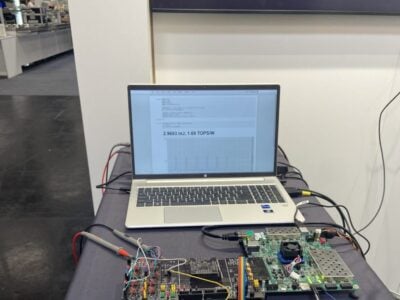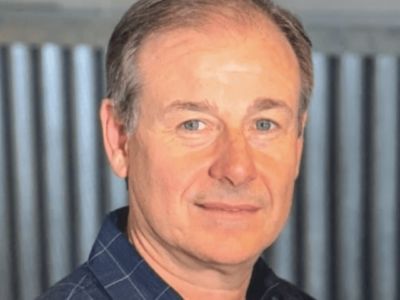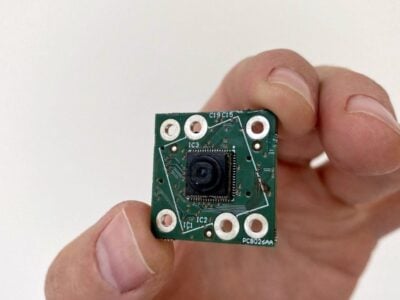
PragmatIC: Making semiconductor fabs more sustainable
Making the world’s semiconductor fabs sustainable is a major challenge. Richard Price, chief technology officer of PragmatIC Semiconductor talks to Nick Flaherty about a project to do just that.
UK-based PragmatIC has developed a process for building plastic chips that is quicker and more sustainable than silicon. With a fab using 200mm silicon wafers at the Centre for Process Innovation (CPI) in the north east of the UK and a 300mm fab under development, it is part of a project to instrument the process and determine ways to improve the sustainability of the chip making process, form the purity of the water and materials to the energy usage.
“We have 200mmm production in Sedgefield within the CPI but its entirely PragmatIC operated,” said Price. “This is for production but its also for development with a 60/40 mix and this will be ramping up to several thousand wafers per month.
“We are in the process of commissioning a 300mm fab in South Durham, re-purposing a brownfield site that was previously a plastic pipe factory that that should be operational in H1 2023. This will be purely production, starting from 5000 wafers a month with the ability to go up to 4 times that on the first line. Additional lines will be modular versions of the same so 170,000 wafers a year at full scale.”
Sustainability is a key consideration for the operation of the fab. “The data we have seen is that as you move to more advanced nodes and look at not just the energy intensity but the pollutants that are generated, that become really exacerbated at the advanced process nodes. SF8 for example is 1000 more polluting as a greenhouse gas, and the whole carbon footprint increases with larger ovens etc
The £2.4m INSPIRE project has multiple work plans and one of those is looking at how to replace some of the chemicals. Generally there isn’t much recycling of the chemicals used in the chip making process, and ideally these materials should be water-based rather than using volatile chemicals for example for the photoresist.
The aim is to add sensors to the production process to analyse the effect of different levels of purity of the gases and chemicals used, including the purity of the water.
“The largest volume and the biggest carbon foot print is some of the wet chemicals, the solvents for cleaning and resist stripping, as they are bulk waste,” he said, “Converting these chemicals from organic to water-based allows them be treated on site.
The advantage of the PragmatIC process is the low cycle time of a few days to test out how the new chemicals perform. “This means we have more capacity to do that type of work, its less risky to the value of the products but also the learning cycles are much faster,” said Price. “That’s what we want to prove – what’s the impact of making changes.”
“We are aiming to have the sensors in place for Q3 next year to measure the outputs more accurately and they we will be in the position to do the side by side trials of different materials and purities,” he said. “We should have result son that by the end of next year.”
As well as water-based materials, the project will also look at the purity of the gases.
“There is definitely a change as people realise its expensive to do the purification and there’s a recognition of the carbon footprint so we will be looking at the appropriate level of purity for different parts of the process,” said Price. “A process gas may need high purity but a compressed air or nitrogen that’s more of a service so there’s an opportunity to optimise that and that learning could transfer across to other fabs quite quickly.”
“The place to start is with the older technology nodes – those kinds of opportunities to change out chemicals should be transferable. The other area is in back end of line, there are similarities in the types of tools and lithography in advanced packaging with our process. We are also looking at water purification as well.”
“The next phase is looking at renewable energy,” he said.
The challenge is to support the 24/7 operation of fabs, which rules out intermittent sources of energy such as solar and wind power. The majority of the power requirements are for the ventilation, powering the air conditioning that keeps the plant at constant temperature and humidity, as well as the blowers that provide the laminar air flow that is essential for a reliable manufacturing process.
“We have looked at onsite generation and there’s potential to use some of the waste to generate energy onsite but its not part of our current phase of work. We could run an entire fab off CHP [combined heat and power, generated by burning waste].”
The company is also working with the Sustainable Manufacturing Hub at the Henry Royce Institute in in Manchester on lifecycle analysis and recyclability, looking at mechanical and chemical recycling, particularly for its plastic RFID chips and how these might interact with the supply chain.
 If you enjoyed this article, you will like the following ones: don't miss them by subscribing to :
eeNews on Google News
If you enjoyed this article, you will like the following ones: don't miss them by subscribing to :
eeNews on Google News






